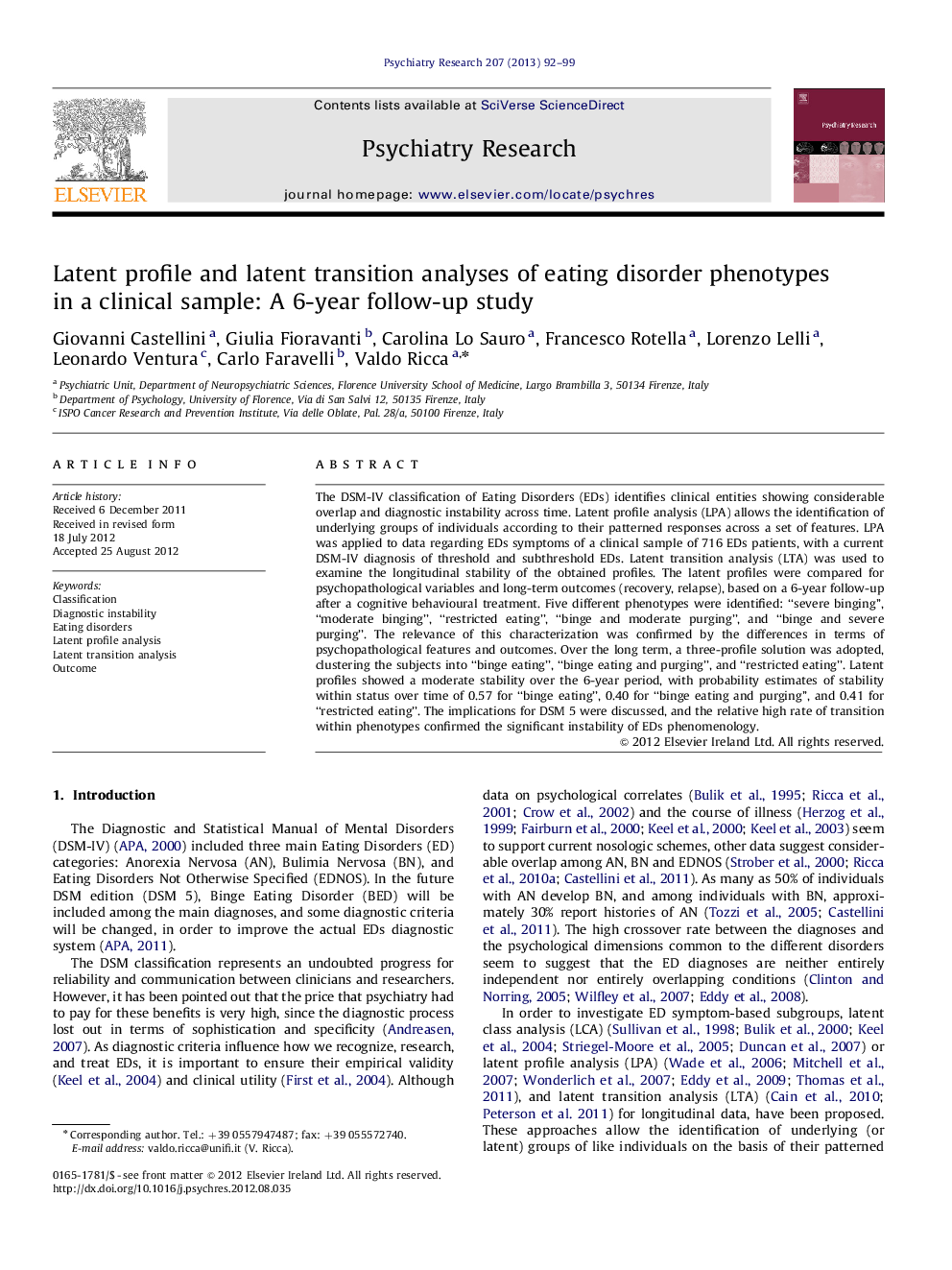| Article ID | Journal | Published Year | Pages | File Type |
|---|---|---|---|---|
| 6815444 | Psychiatry Research | 2013 | 8 Pages |
Abstract
The DSM-IV classification of Eating Disorders (EDs) identifies clinical entities showing considerable overlap and diagnostic instability across time. Latent profile analysis (LPA) allows the identification of underlying groups of individuals according to their patterned responses across a set of features. LPA was applied to data regarding EDs symptoms of a clinical sample of 716 EDs patients, with a current DSM-IV diagnosis of threshold and subthreshold EDs. Latent transition analysis (LTA) was used to examine the longitudinal stability of the obtained profiles. The latent profiles were compared for psychopathological variables and long-term outcomes (recovery, relapse), based on a 6-year follow-up after a cognitive behavioural treatment. Five different phenotypes were identified: “severe binging”, “moderate binging”, “restricted eating”, “binge and moderate purging”, and “binge and severe purging”. The relevance of this characterization was confirmed by the differences in terms of psychopathological features and outcomes. Over the long term, a three-profile solution was adopted, clustering the subjects into “binge eating”, “binge eating and purging”, and “restricted eating”. Latent profiles showed a moderate stability over the 6-year period, with probability estimates of stability within status over time of 0.57 for “binge eating”, 0.40 for “binge eating and purging”, and 0.41 for “restricted eating”. The implications for DSM 5 were discussed, and the relative high rate of transition within phenotypes confirmed the significant instability of EDs phenomenology.
Related Topics
Life Sciences
Neuroscience
Biological Psychiatry
Authors
Giovanni Castellini, Giulia Fioravanti, Carolina Lo Sauro, Francesco Rotella, Lorenzo Lelli, Leonardo Ventura, Carlo Faravelli, Valdo Ricca,
